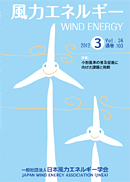Volume 39, Issue 1
Displaying 1-38 of 38 articles from this issue
- |<
- <
- 1
- >
- >|
-
2015 Volume 39 Issue 1 Pages 1
Published: 2015
Released on J-STAGE: September 30, 2016
Download PDF (630K)
-
2015 Volume 39 Issue 1 Pages 2-7
Published: 2015
Released on J-STAGE: September 30, 2016
Download PDF (4880K) -
2015 Volume 39 Issue 1 Pages 8-10
Published: 2015
Released on J-STAGE: September 30, 2016
Download PDF (1475K) -
2015 Volume 39 Issue 1 Pages 11-13
Published: 2015
Released on J-STAGE: September 30, 2016
Download PDF (1212K) -
2015 Volume 39 Issue 1 Pages 14-17
Published: 2015
Released on J-STAGE: September 30, 2016
Download PDF (3090K) -
2015 Volume 39 Issue 1 Pages 18-23
Published: 2015
Released on J-STAGE: September 30, 2016
Download PDF (1528K) -
2015 Volume 39 Issue 1 Pages 24-26
Published: 2015
Released on J-STAGE: September 30, 2016
Download PDF (2311K) -
2015 Volume 39 Issue 1 Pages 27-28
Published: 2015
Released on J-STAGE: September 30, 2016
Download PDF (2778K) -
2015 Volume 39 Issue 1 Pages 29-31
Published: 2015
Released on J-STAGE: September 30, 2016
Download PDF (1352K) -
2015 Volume 39 Issue 1 Pages 32-33
Published: 2015
Released on J-STAGE: September 30, 2016
Download PDF (978K) -
2015 Volume 39 Issue 1 Pages 34-37
Published: 2015
Released on J-STAGE: September 30, 2016
Download PDF (2231K) -
2015 Volume 39 Issue 1 Pages 38-39
Published: 2015
Released on J-STAGE: September 30, 2016
Download PDF (2819K) -
2015 Volume 39 Issue 1 Pages 40
Published: 2015
Released on J-STAGE: September 30, 2016
Download PDF (973K) -
2015 Volume 39 Issue 1 Pages 41
Published: 2015
Released on J-STAGE: September 30, 2016
Download PDF (1087K)
-
2015 Volume 39 Issue 1 Pages 42-45
Published: 2015
Released on J-STAGE: September 30, 2016
Download PDF (1296K) -
2015 Volume 39 Issue 1 Pages 46-50
Published: 2015
Released on J-STAGE: September 30, 2016
Download PDF (1209K) -
2015 Volume 39 Issue 1 Pages 51-56
Published: 2015
Released on J-STAGE: September 30, 2016
Download PDF (9418K)
-
2015 Volume 39 Issue 1 Pages 57-60
Published: 2015
Released on J-STAGE: September 30, 2016
Download PDF (2902K) -
2015 Volume 39 Issue 1 Pages 61-63
Published: 2015
Released on J-STAGE: September 30, 2016
Download PDF (2816K) -
2015 Volume 39 Issue 1 Pages 64-67
Published: 2015
Released on J-STAGE: September 30, 2016
Download PDF (5109K) -
2015 Volume 39 Issue 1 Pages 68-70
Published: 2015
Released on J-STAGE: September 30, 2016
Download PDF (1889K) -
2015 Volume 39 Issue 1 Pages 71-73
Published: 2015
Released on J-STAGE: September 30, 2016
Download PDF (2339K)
-
2015 Volume 39 Issue 1 Pages 74-77
Published: 2015
Released on J-STAGE: September 30, 2016
Download PDF (2449K) -
2015 Volume 39 Issue 1 Pages 78-81
Published: 2015
Released on J-STAGE: September 30, 2016
Download PDF (1820K) -
2015 Volume 39 Issue 1 Pages 82-85
Published: 2015
Released on J-STAGE: September 30, 2016
Download PDF (1067K)
-
2015 Volume 39 Issue 1 Pages 86-90
Published: 2015
Released on J-STAGE: September 30, 2016
Download PDF (1810K) -
2015 Volume 39 Issue 1 Pages 91-92
Published: 2015
Released on J-STAGE: September 30, 2016
Download PDF (749K) -
2015 Volume 39 Issue 1 Pages 93-96
Published: 2015
Released on J-STAGE: September 30, 2016
Download PDF (3644K) -
2015 Volume 39 Issue 1 Pages 97-100
Published: 2015
Released on J-STAGE: September 30, 2016
Download PDF (3194K) -
2015 Volume 39 Issue 1 Pages 101-102
Published: 2015
Released on J-STAGE: September 30, 2016
Download PDF (1475K)
-
2015 Volume 39 Issue 1 Pages 103-106
Published: 2015
Released on J-STAGE: September 30, 2016
Download PDF (985K) -
2015 Volume 39 Issue 1 Pages 107
Published: 2015
Released on J-STAGE: September 30, 2016
Download PDF (768K) -
2015 Volume 39 Issue 1 Pages 108
Published: 2015
Released on J-STAGE: September 30, 2016
Download PDF (2948K)
-
2015 Volume 39 Issue 1 Pages 109-112
Published: 2015
Released on J-STAGE: September 30, 2016
Download PDF (1719K) -
2015 Volume 39 Issue 1 Pages 113-116
Published: 2015
Released on J-STAGE: September 30, 2016
Download PDF (3271K)
-
2015 Volume 39 Issue 1 Pages A_1-A_5
Published: 2015
Released on J-STAGE: September 30, 2016
Download PDF (1160K) -
2015 Volume 39 Issue 1 Pages A_14-A_21
Published: 2015
Released on J-STAGE: September 30, 2016
Download PDF (2657K) -
2015 Volume 39 Issue 1 Pages A_6-A_13
Published: 2015
Released on J-STAGE: September 30, 2016
Download PDF (3739K)
- |<
- <
- 1
- >
- >|
